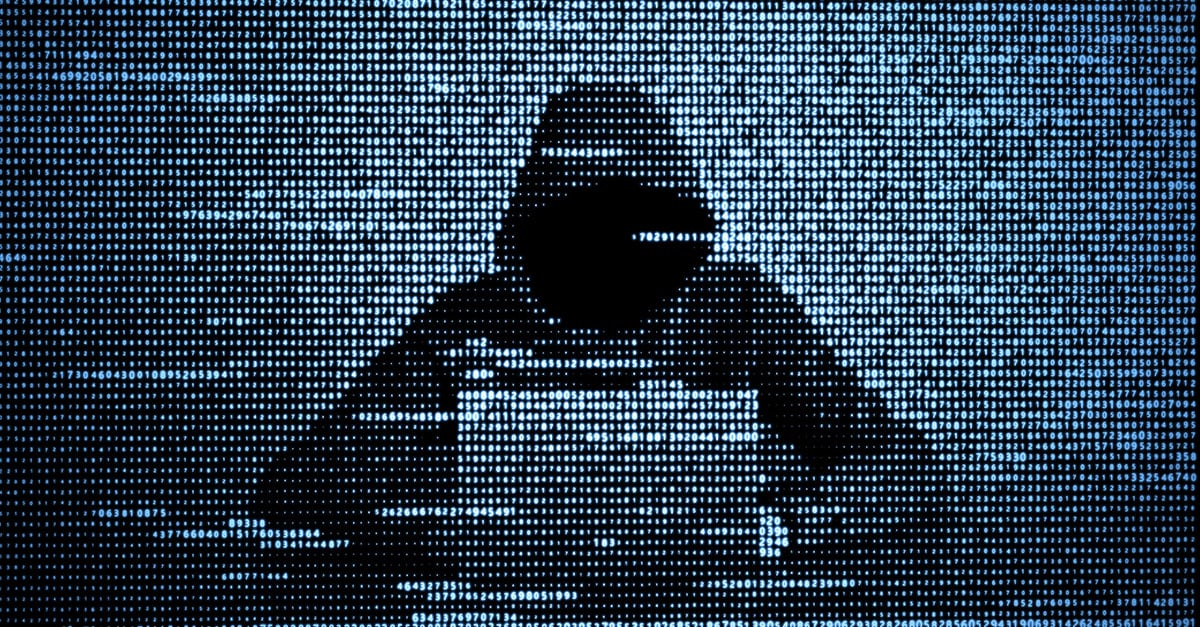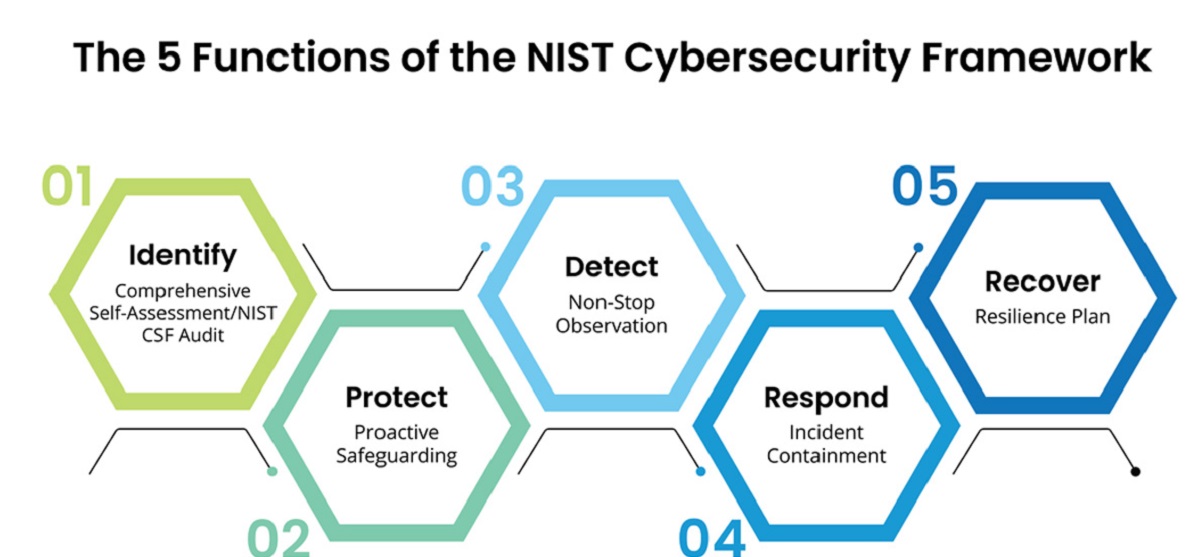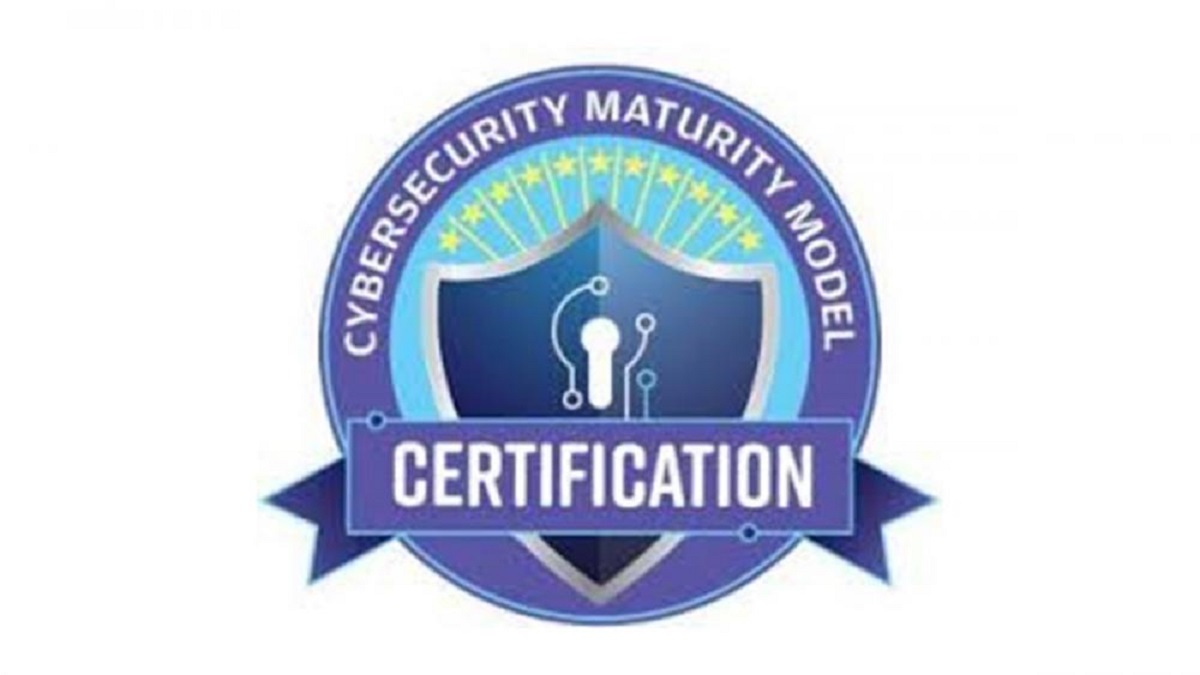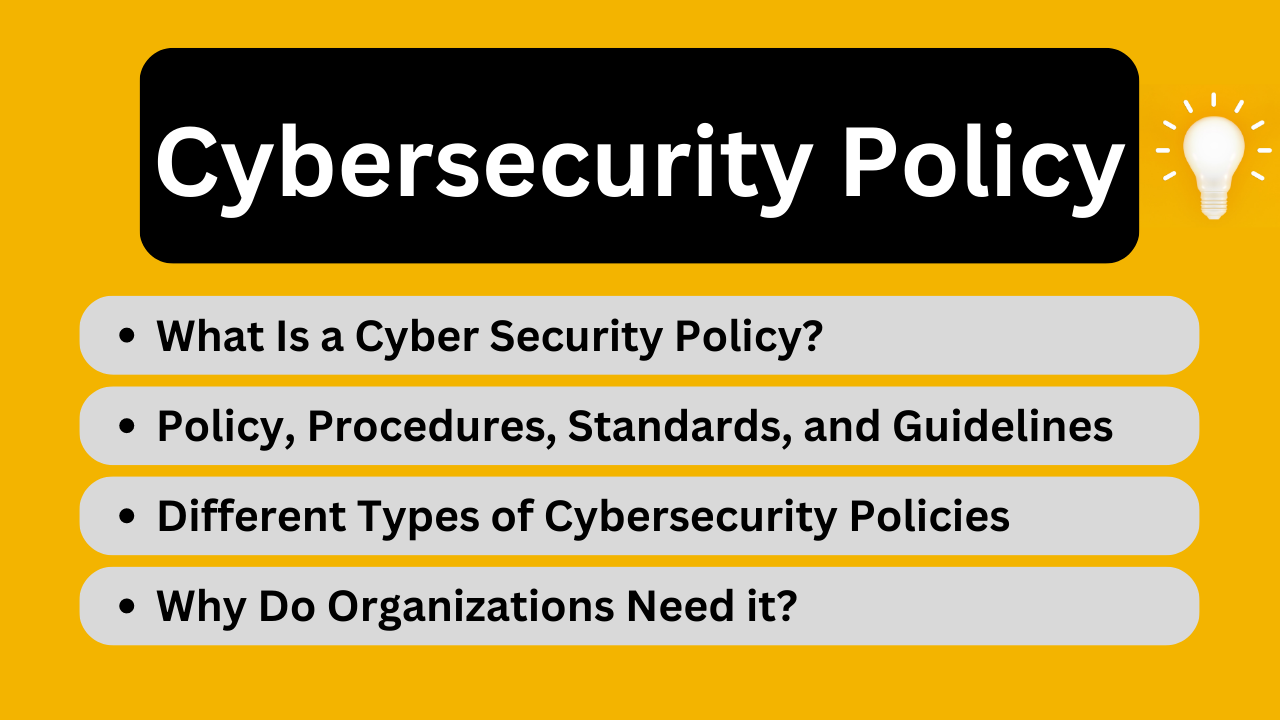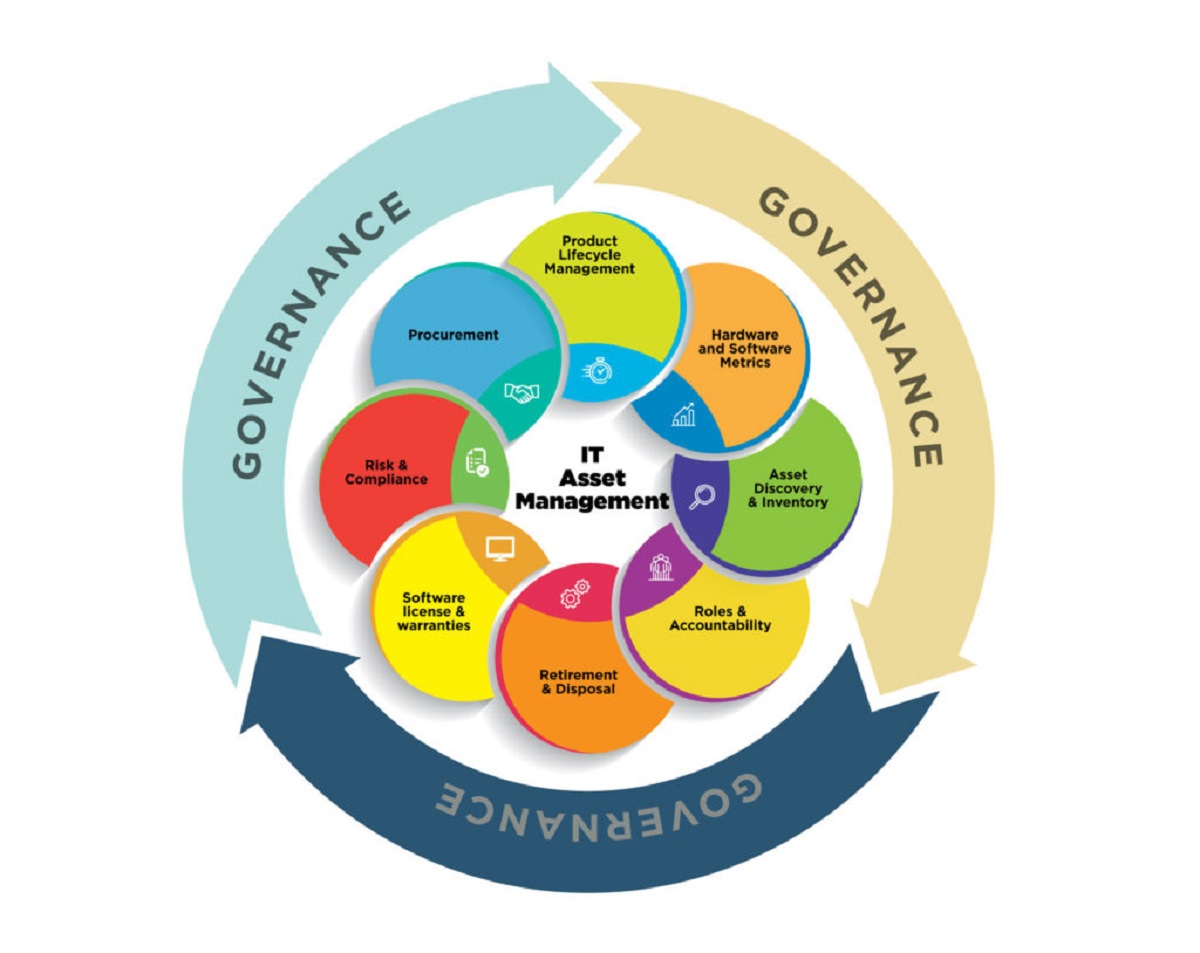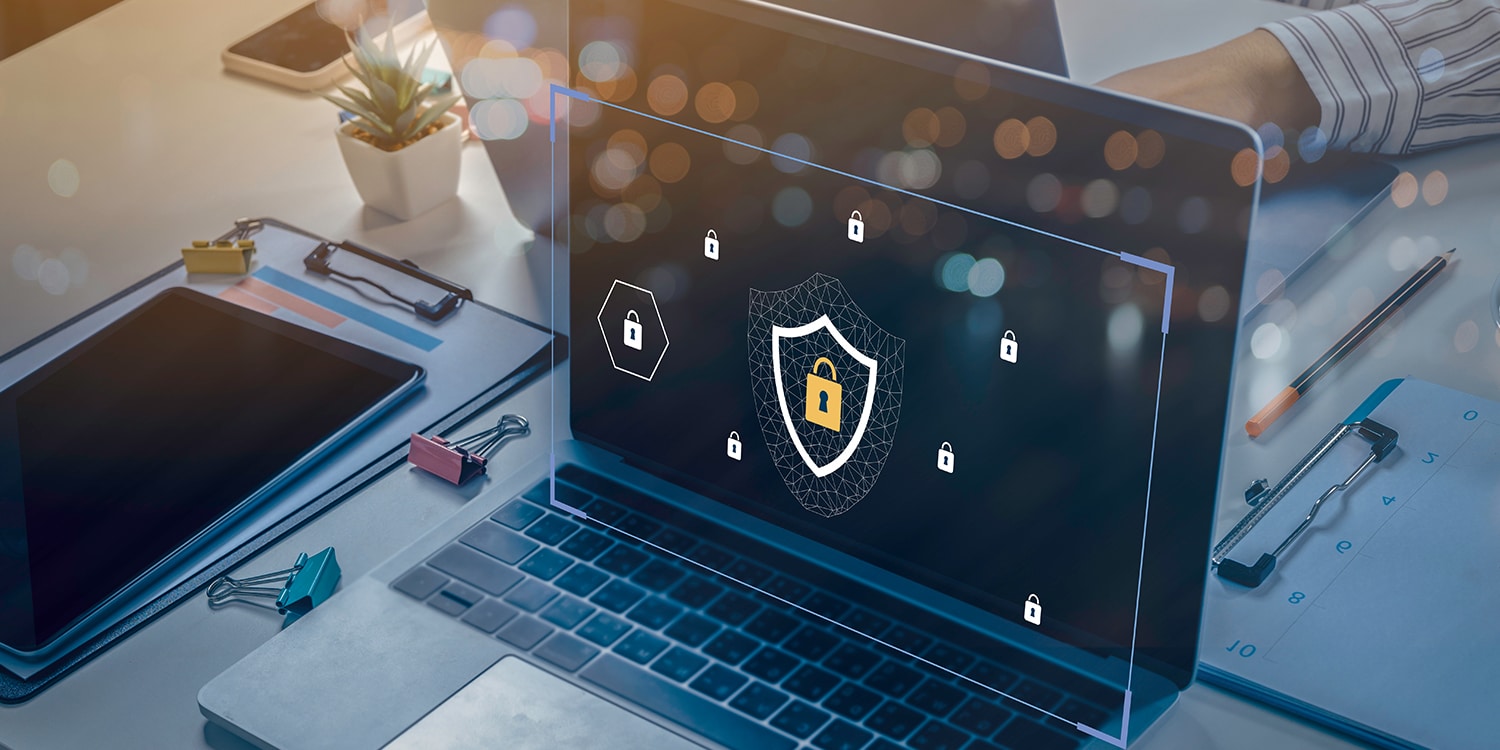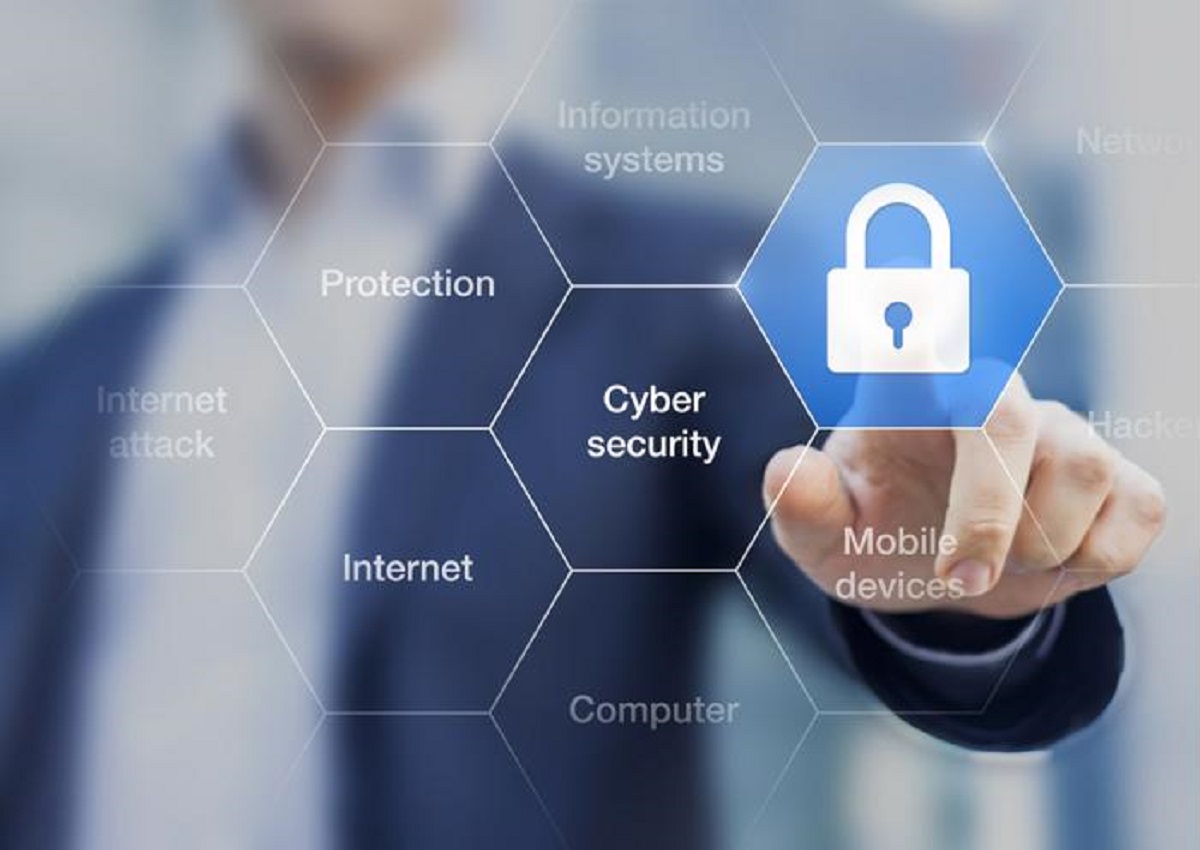Introduction
Cybersecurity is an essential aspect of our digital lives. With the increasing prevalence of cyber-attacks and data breaches, protecting our personal information and sensitive data has become more crucial than ever before. Hackers and cybercriminals are constantly evolving their techniques, making it necessary for individuals and businesses to be proactive in enhancing their cybersecurity measures.
In this article, we will explore ten effective strategies to improve cybersecurity. These approaches are applicable to individuals, as well as organizations, and can significantly reduce the risk of falling victim to cyber threats. By implementing these measures, you can safeguard your online presence, protect your data from unauthorized access, and ensure a secure digital environment for yourself and your valuable information.
From adopting strong password management habits to understanding the importance of regular software updates, we will cover a variety of techniques to fortify your digital defenses. Additionally, we will delve into the significance of two-factor authentication and how it adds an extra layer of security to your online accounts.
Furthermore, we will discuss the dangers of phishing attacks and provide tips to identify and avoid falling for these scams. We will go over the importance of securing your Wi-Fi network and using virtual private networks (VPNs) to encrypt your internet traffic, safeguarding your sensitive information from prying eyes.
Backing up your data regularly is another key aspect of cybersecurity that we will emphasize. By creating backups, you can mitigate the impact of data loss due to a ransomware attack or hardware failure.
Additionally, we will advise you to exercise caution when using public Wi-Fi networks and explain how firewalls can act as a barrier against unauthorized access to your devices and network.
Finally, we will stress the importance of educating yourself and your team about cybersecurity best practices. By fostering a culture of awareness and staying informed about the latest threats and prevention techniques, you can significantly reduce the risk of falling victim to cyber-attacks.
Now, let us dive into each of these strategies in more detail and explore how they can contribute to enhancing your cybersecurity.
Password Management
Effective password management is one of the fundamental aspects of strong cybersecurity. Yet, many individuals still use weak, easily guessable, or recycled passwords across multiple accounts, making them vulnerable to unauthorized access.
To improve your password security, follow these best practices:
- Create Strong and Unique Passwords:
- Use a Password Manager:
- Enable Two-Factor Authentication (2FA):
- Regularly Update Your Passwords:
Use a combination of uppercase and lowercase letters, numbers, and special characters to create complex passwords that are difficult to guess. Avoid using common phrases or personal information that can be easily associated with you. Additionally, ensure each online account has a unique password to prevent a domino effect in case one account gets compromised.
Considering the number of online accounts we have, it can be challenging to remember multiple complex passwords. A password manager is a secure solution that helps store and generate strong passwords for each account. You only need to remember one master password to access all your passwords safely.
Two-Factor Authentication adds an extra layer of security by requiring a verification code or biometric data in addition to your password. This ensures that even if someone manages to obtain your password, they will still need the second factor to gain access.
It’s a good practice to change your passwords periodically, especially for critical accounts like email, banking, and social media. Set a reminder to update your passwords every three to six months or whenever you suspect any breach or unauthorized activity.
By implementing these password management practices, you significantly reduce the risk of unauthorized access to your accounts and personal information. Remember, strong and unique passwords are the first line of defense in protecting your digital identity.
Software Updates
Regularly updating software is a critical step in maintaining robust cybersecurity. Software developers release updates and patches to address security vulnerabilities and fix software bugs that could potentially be exploited by hackers. Ignoring these updates puts your devices and data at risk.
Here are the reasons why software updates are essential:
- Security Fixes:
- Bug Fixes and Performance Enhancements:
- Compatibility with Newer Technologies:
- Patching Known Vulnerabilities:
Software updates often include security patches that address known vulnerabilities. Hackers constantly explore these vulnerabilities to gain unauthorized access to devices or networks. By keeping your software up to date, you ensure that you have the latest security fixes to protect against potential attacks.
Software updates not only address security issues but also resolve software bugs and improve system performance. These updates optimize the functioning of your software, providing a smoother and more efficient user experience.
Technology is rapidly evolving, and software updates ensure compatibility with the latest hardware, operating system, or any emerging technologies. By updating your software, you can ensure that it remains compatible with the latest advancements and features.
Software developers are constantly monitoring their products for vulnerabilities and working on patches to fix them. When you stay up to date with software updates, you benefit from the latest patches, making it harder for hackers to exploit any known vulnerabilities.
Keep in mind that software updates are not only limited to your computer’s operating system but also include other software like antivirus programs, web browsers, and applications. Enable automatic updates whenever possible, as this ensures that you receive the latest security patches without having to manually install them.
By regularly updating your software, you mitigate the risk of falling victim to known vulnerabilities and ensure that your devices and data remain secure.
Two-Factor Authentication
Two-Factor Authentication (2FA) is an additional layer of security that provides an extra barrier against unauthorized access to your online accounts. It requires users to provide a second verification factor, usually in the form of a unique code or biometric data, along with their username and password.
Here are the main benefits of using Two-Factor Authentication:
- Enhanced Security:
- Protection Against Identity Theft:
- Compatibility Across Different Platforms:
- Easy to Implement:
By enabling 2FA, even if someone manages to obtain your password, they would still need the second factor to gain access to your account. This adds a significant level of protection against unauthorized access, as the second factor is usually unique and not easily replicable.
Identity theft is a prevalent form of cybercrime. Hackers may try to use stolen credentials to impersonate you and gain access to your accounts. With 2FA, even if your username and password are compromised, the attacker would still need the second verification factor to successfully impersonate you.
Many popular online platforms, including social media networks, email providers, and banking institutions, offer support for 2FA. This means you can enable this additional layer of security across various accounts and enjoy consistent protection across different platforms.
Enabling 2FA is typically straightforward and user-friendly. Most commonly, it involves linking your account to a mobile device or authenticator app. Once set up, you’ll receive a unique code or notification on your device, which you’ll need to enter when prompted during the login process.
To enable Two-Factor Authentication:
- Visit your account settings or security settings on the respective platform.
- Look for the option to enable Two-Factor Authentication or 2FA.
- Follow the instructions provided to set it up, which may involve linking your account to a mobile device, receiving verification codes via text message, or using an authenticator app.
It’s important to note that while Two-Factor Authentication adds an extra layer of security, it’s not foolproof. It’s still essential to follow other cybersecurity best practices, such as creating strong and unique passwords, regularly updating software, and being cautious of phishing attempts.
By implementing Two-Factor Authentication, you significantly enhance the security of your online accounts and reduce the risk of unauthorized access to your personal information and sensitive data.
Be Cautious of Phishing Attacks
Phishing attacks are a common form of cyber-attack where malicious individuals or organizations trick users into revealing their personal information, such as usernames, passwords, or credit card details, by masquerading as a trustworthy entity. These attacks usually occur through deceptive emails, text messages, or websites.
To protect yourself from phishing attacks, it is important to follow these precautions:
- Be Skeptical of Unsolicited Requests:
- Do Not Click Suspicious Links or Open Attachments:
- Double-Check Website URLs:
- Keep Your Software and Anti-Malware Tools Up to Date:
- Invest in Phishing Awareness Training:
If you receive an unexpected email, message, or call asking for your personal or financial information, proceed with caution. Legitimate organizations rarely request sensitive information through such channels. Verify the identity and legitimacy of the sender before responding or providing any information.
Phishing attempts often include links or attachments that, when clicked or opened, can install malware on your device or direct you to fake websites designed to collect your information. Be cautious of any unsolicited links or attachments and avoid clicking on them unless you are certain of their legitimacy.
Phishing websites can mimic the design and appearance of legitimate websites to trick users into entering their information. Before submitting any sensitive information on a website, ensure that the URL is correct, and the website has a secure connection (look for the padlock symbol in the address bar).
Regularly updating your operating system, web browser, and anti-malware software helps protect you against known vulnerabilities and phishing attacks. These updates include security patches that address the latest threats, reducing your risk of falling victim to phishing attempts.
Both individuals and organizations can benefit from phishing awareness training. It teaches you how to recognize phishing attempts, understand common tactics used by attackers, and enhances your overall cybersecurity awareness. By familiarizing yourself with phishing techniques, you become less likely to fall for such scams.
Remember, cybercriminals are constantly evolving their methods, making it crucial to stay vigilant and skeptical when it comes to providing personal information online. Being cautious of phishing attacks and employing these countermeasures significantly reduces the likelihood of becoming a victim.
Secure Your Wi-Fi Network
Your Wi-Fi network is an entry point for hackers to gain unauthorized access to your devices and steal your sensitive information. Taking steps to secure your Wi-Fi network is essential in protecting your data and maintaining a secure online environment.
Here are some measures you can take to secure your Wi-Fi network:
- Change the Default Administrator Password:
- Use WPA2 or WPA3 Encryption:
- Enable Network Firewall:
- Hide Your Wi-Fi Network’s SSID:
- Enable MAC Address Filtering:
- Regularly Update Your Router’s Firmware:
When setting up your Wi-Fi router, it comes with a default administrator username and password. Hackers are well aware of these defaults and can easily exploit them. Change the default login credentials to a strong password to prevent unauthorized access to your router settings.
Ensure that your Wi-Fi network’s encryption is set to WPA2 or WPA3, the most secure encryption protocols currently available. The encryption protects the data transmitted between your devices and the router, making it difficult for hackers to intercept and decipher.
Your Wi-Fi router should have a built-in firewall that filters incoming and outgoing network traffic. Enable this firewall to add an extra layer of protection against potential cyber threats.
Your Wi-Fi network’s Service Set Identifier (SSID) is the name that appears when devices search for available networks. By disabling the broadcast of the SSID, you make it harder for attackers to discover and target your network. However, keep in mind that this is not a foolproof method and should be used in conjunction with other security measures.
Each device connected to your Wi-Fi network has a unique MAC address. With MAC address filtering, you can specify which devices are allowed to connect to your network. By enabling this feature, you can restrict unauthorized devices from joining your network.
Router manufacturers release firmware updates to address security vulnerabilities and improve performance. Regularly check for firmware updates and install them to ensure your router has the latest security patches.
Implementing these security measures for your Wi-Fi network significantly strengthens its defenses and reduces the risk of unauthorized access and data breaches. By securing your Wi-Fi network, you create a safer online environment for yourself and your connected devices.
Use a Virtual Private Network (VPN)
A Virtual Private Network (VPN) is a powerful tool that adds an extra layer of security and privacy to your internet connection. It creates a secure and encrypted tunnel between your device and the websites or services you access on the internet.
Here are the key benefits of using a VPN:
- Enhanced Security:
- Privacy Protection:
- Access Restricted Content:
- Secure Remote Access:
- Public Wi-Fi Protection:
- Anonymous Browsing:
When connected to a VPN, your internet traffic is encrypted and transmitted through a secure tunnel. This protects your data from interception by hackers or other malicious entities, keeping your sensitive information secure.
Using a VPN enhances your online privacy by masking your IP address. Your IP address reveals your location and can be used to track your online activities. By connecting to a VPN server, your true IP address is hidden, making it difficult for anyone to trace your online behavior.
Many countries or regions have restrictions or censorship on certain websites or online services. By connecting to a VPN server located in a different country, you can bypass these restrictions and access content that might be otherwise unavailable.
For individuals and businesses with remote employees, a VPN allows secure remote access to internal networks. This ensures that sensitive data and communications are protected, even when accessed from outside the physical office environment.
Public Wi-Fi networks, such as those found in coffee shops, airports, or hotels, are often unsecured and present risks to your data. By using a VPN, your internet traffic is encrypted, protecting your information from potential eavesdroppers on the same network.
A VPN provides an added layer of anonymity by obscuring your online activities. It prevents your internet service provider (ISP), advertisers, or other entities from tracking your browsing habits and targeting you with unwanted ads or personalized content.
When choosing a VPN provider, consider factors such as the provider’s reputation, encryption strength, server location options, and user-friendly interface. It’s essential to select a reliable and trustworthy VPN service to ensure your data remains secure.
Remember that while a VPN provides significant security benefits, it is not a substitute for other cybersecurity measures such as strong passwords, software updates, and safe browsing habits. Utilizing a VPN in combination with these best practices offers a comprehensive approach to protecting your online privacy and security.
Regularly Backup Your Data
Regularly backing up your data is crucial in safeguarding your valuable information from accidental loss, hardware failure, or malicious attacks. By creating backups, you ensure that your data remains accessible and recoverable in the event of a data loss incident.
Here are the key reasons why regular data backups are essential:
- Protection Against Hardware Failure:
- Resilience Against Ransomware Attacks:
- Accidental Deletion or Human Error:
- Protection Against Natural Disasters:
- Peace of Mind:
Hard drives, solid-state drives, and other storage devices can fail unexpectedly, leading to permanent data loss. By regularly backing up your data, you minimize the risk of losing important files or documents due to hardware failure.
Ransomware attacks are a growing threat where hackers encrypt your data and demand a ransom to release it. Having regular backups ensures that you can restore your data without paying a ransom, minimizing the impact of such attacks.
Human error is a common cause of data loss, whether it’s accidental deletion, overwriting files, or mistakenly formatting a storage device. With regular backups, you can easily recover your data and undo the consequences of such mistakes.
Natural disasters, such as fires, floods, or earthquakes, can damage or destroy physical storage devices. By storing your backups in off-site locations or utilizing cloud-based backup services, you ensure that your data remains safe even in the face of such disasters.
Regularly backing up your data provides peace of mind, knowing that your important files, photos, and documents are safe and can be easily restored. It reduces the stress and anxiety associated with potential data loss incidents.
When planning your data backup strategy, consider the following:
- Select a Backup Method:
- Set a Backup Schedule:
- Test Your Backups:
- Keep Multiple Copies:
Choose a backup method that suits your needs, whether it’s using external hard drives, network-attached storage (NAS) devices, or cloud-based backup services. Each method has its advantages and considerations, such as storage capacity, accessibility, and cost.
Determine how frequently you need to back up your data based on its importance and the frequency of changes. Setting up an automated backup schedule ensures that your data is always up to date and reduces the risk of forgetting to perform backups manually.
Regularly test your backups to ensure the integrity of your data and the effectiveness of the backup process. This involves verifying that your backups can be successfully restored and that the restored data is complete and accurate.
It is recommended to maintain multiple copies of your backups, including one off-site or in a secure cloud storage service. This provides an extra layer of protection in case one backup becomes inaccessible or compromised.
Remember that data loss incidents can occur at any time, so it’s essential to make backing up your data a regular habit. By doing so, you can minimize the impact of data loss and maintain the availability and integrity of your important information.
Avoid Public Wi-Fi Networks
Public Wi-Fi networks, such as those found in coffee shops, airports, or hotels, may seem convenient for staying connected on the go. However, these networks can pose significant security risks and expose your sensitive data to potential threats. It is crucial to be cautious and avoid connecting to public Wi-Fi networks whenever possible.
Here are the key reasons why you should avoid public Wi-Fi networks:
- Man-in-the-Middle Attacks:
- Unsecured Network Connections:
- Rogue Networks:
- Untrusted Network Owners:
- Credential Theft:
Public Wi-Fi networks are susceptible to man-in-the-middle attacks, where hackers intercept and monitor network traffic to steal sensitive information. They can potentially capture usernames, passwords, credit card details, or any other data transmitted over the network.
Public Wi-Fi networks are typically unsecured or use weak encryption, which means that anyone connected to the same network can easily eavesdrop on your internet traffic and potentially gain unauthorized access to your device.
Attackers may set up fake Wi-Fi networks with names that resemble legitimate ones to trick users into connecting. Once connected, they can monitor your internet activity or even distribute malware to your device.
When using public Wi-Fi networks, you have no control over the security measures implemented by the network owner. There is always a risk that the network itself has been compromised or is being monitored for malicious purposes.
Logging into sensitive accounts, such as email or online banking, on a public Wi-Fi network puts your credentials at risk. Hackers can capture your login credentials and gain unauthorized access to your accounts, potentially leading to identity theft or financial loss.
However, if you must use public Wi-Fi, here are some precautions you can take:
- Use a Virtual Private Network (VPN):
- Disable Automatic Wi-Fi Connectivity:
- Verify Network Authenticity:
- Use Cellular Data:
- Enable Firewall and Antivirus Protection:
A VPN encrypts your internet connection and adds a layer of security, making it harder for hackers to intercept your data on public Wi-Fi networks. Connect to a trustworthy VPN service before accessing the internet.
Turn off automatic Wi-Fi connectivity on your devices to prevent them from connecting to unknown or potentially malicious networks without your knowledge.
Confirm the legitimacy of the Wi-Fi network with the establishment’s staff before connecting. Use the official Wi-Fi network provided by the venue instead of connecting to random or unidentified networks.
Consider using your cellular data instead of public Wi-Fi networks when performing sensitive tasks, such as online banking or accessing personal accounts.
Activate the firewall and ensure that you have up-to-date antivirus software installed on your device to provide an additional layer of protection against potential threats.
By avoiding public Wi-Fi networks whenever possible and taking necessary precautions when you have no alternative, you protect your sensitive data and reduce the risk of falling victim to cyber threats.
Employ Firewall Protection
A firewall is a network security device that acts as a barrier between your computer or network and the internet. It monitors and controls incoming and outgoing network traffic, allowing only authorized and safe connections while blocking potentially malicious or unauthorized access attempts. Employing firewall protection is essential in maintaining a secure online environment for your devices and data.
Here are the key reasons why firewall protection is important:
- Network Security:
- Intrusion Prevention:
- Protection Against Malware:
- Monitoring and Logging:
- Application Control:
A firewall acts as the first line of defense against unauthorized access attempts and malicious activities. It examines all incoming and outgoing network traffic and blocks any suspicious or unauthorized connections.
Firewalls monitor network traffic and detect potential intrusion attempts from hackers or automated bots. They can block these attempts and prevent unauthorized access to your devices or network.
Firewalls can block incoming network traffic containing malware or known malicious codes, preventing them from reaching your devices. This reduces the risk of malware infections and protects your data from being compromised.
Firewalls provide monitoring and logging capabilities, allowing you to track network traffic and detect any suspicious patterns or potential security breaches. These logs can be valuable for investigating security incidents and enhancing your network security posture.
Many advanced firewalls offer application-level control, allowing you to regulate and restrict specific applications’ access to the internet. This can prevent unauthorized data leakage or the use of potentially risky applications.
There are two primary types of firewalls:
- Hardware Firewalls:
- Software Firewalls:
Hardware firewalls are dedicated devices that provide network-wide protection. They are typically installed between your local network and the internet, providing robust security for all connected devices.
Software firewalls are installed on individual devices and provide specific protection for that device. Operating systems often include built-in software firewalls that can be enabled and configured.
It is essential to enable and configure firewalls on your devices to provide an added layer of protection. Here are some best practices for employing firewall protection:
- Enable Firewalls:
- Keep Firewalls Up to Date:
- Configure Firewall Rules:
- Regularly Review Firewall Logs:
Ensure that firewalls are enabled and active on your computers, laptops, and other devices. This includes both hardware firewalls (if available) and software firewalls.
Regularly update the firmware or software of your firewalls to ensure that they have the latest security patches and updates. This helps protect against new threats and vulnerabilities.
Customize firewall rules based on your specific requirements and network setup. This involves allowing necessary traffic while blocking or restricting unnecessary or potentially harmful connections.
Monitor firewall logs to identify any suspicious activities or potential vulnerabilities. Regularly reviewing the logs can help you identify and address security issues promptly.
By employing firewall protection and following these best practices, you significantly enhance your network security and protect your devices and data from unauthorized access and potential threats.
Educate Yourself and Your Team
Education is a crucial aspect of cybersecurity. Staying informed about the latest threats, understanding best practices, and fostering a culture of cybersecurity awareness are essential for protecting yourself and your team from potential cyber-attacks. Here are the key reasons why education plays a vital role in cybersecurity:
- Recognize Common Threats:
- Implement Best Practices:
- Stay Updated on Emerging Threats:
- Create a Culture of Security:
- Encourage Vigilance:
- Implement Incident Response Procedures:
By educating yourself and your team about common threats, such as phishing emails, social engineering, or malware, you can recognize red flags and avoid falling victim to these attacks. This knowledge enables you to make informed decisions and take necessary precautions to protect your organization’s data and systems.
Education provides the foundation for implementing cybersecurity best practices. This includes practices such as using strong passwords, keeping software up to date, avoiding suspicious links or downloads, and using encryption techniques. By following these best practices, you create a stronger defense against potential cyber threats.
Cyber threats evolve constantly, with new tactics and techniques being developed by hackers. Ongoing education ensures that you stay updated on the latest threats and vulnerabilities. It allows you to adapt your cybersecurity strategies and implement countermeasures to mitigate emerging risks.
Education and awareness enhance the overall security culture within your organization. By educating your team about cybersecurity risks and providing training on security practices, you foster a collective responsibility for protecting sensitive data and maintaining a secure environment.
Education helps instill a sense of vigilance among your team members. By promoting a mindset of being cautious and questioning suspicious activities, you empower your team to actively participate in identifying and reporting potential security incidents.
Education enables you to develop and communicate incident response procedures to address potential security incidents effectively. By educating your team on how to report incidents and respond appropriately, you can minimize the impact of a security breach and facilitate swift resolution.
Here are some ways to educate yourself and your team about cybersecurity:
- Training and Workshops:
- Security Policies and Guidelines:
- Information Sharing:
- Keep Up with Industry News:
- Engage External Experts:
Organize regular cybersecurity training sessions and workshops to educate your team members about current threats, security best practices, and how to respond to potential incidents.
Develop and communicate clear security policies and guidelines that outline acceptable use, password management, and other security protocols. Ensure that your team understands and follows these policies.
Encourage information sharing within your organization by regularly disseminating updates on emerging threats or security incidents. This helps keep your team informed and encourages a collective effort in maintaining cybersecurity.
Stay updated on the latest cybersecurity news and industry trends. Subscribe to relevant publications, websites, and blogs to receive regular updates and insights on emerging threats and best practices.
Consider bringing in external cybersecurity experts to conduct specialized training sessions or provide insights into specific areas of cybersecurity. Their expertise can enhance your team’s knowledge and awareness.
Remember, creating a secure digital environment requires ongoing education and a commitment to staying informed. By investing in cybersecurity education, you equip yourself and your team with the knowledge and skills needed to mitigate risks and protect against potential cyber threats.
Conclusion
Cybersecurity is a continuous effort that requires vigilance, proactive measures, and education to protect ourselves and our valuable digital assets. By implementing the strategies outlined in this article, you can significantly enhance your cybersecurity and reduce the risk of falling victim to cyber threats.
From practicing strong password management to performing regular software updates, each strategy plays a crucial role in safeguarding your data and personal information. Employing Two-Factor Authentication adds an extra layer of security, while being cautious of phishing attacks helps you avoid falling for scams and fraudulent schemes.
Securing your Wi-Fi network, using a Virtual Private Network (VPN), and regularly backing up your data are essential steps in protecting your online presence and ensuring data availability. Additionally, avoiding public Wi-Fi networks and employing firewall protection further fortify your digital defenses.
Lastly, by educating yourself and your team about cybersecurity risks, best practices, and emerging threats, you create a culture of security and empowerment. Ongoing education enables you to navigate the ever-changing threat landscape and respond effectively to potential incidents.
Remember, cybersecurity is a shared responsibility. By implementing these strategies and fostering a proactive approach to cybersecurity, you not only protect yourself but also contribute to a safer digital environment for everyone. Prioritize your cybersecurity, stay informed, and remain vigilant—your digital safety depends on it.







